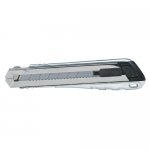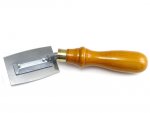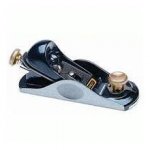Jeff Bergman
Member
- Messages
- 14
Hello All. This is my first real post here (about my first real project), but I've been lurking for a long time and I am pretty new to woodworking.
So I have been talking about building speakers for ages and finally decided to do it. Plan was to make the box out of MDF and then veneer it with walnut. Baffle (front) would be black textured paint.
Anyway, I built the boxes and the crossovers. I ordered the veneer, a wavy/burled walnut raw wood veneer (picture here). So, I got the veneer in the mail yesterday and I suddenly was staring it thinking, great, what now! I have no experience doing veneer or finishing quality stuff.
I would really appreciate some advice. I don't think I'm too over my head but if you could answer a few questions I would feel a lot more comfortable.
1) How flat does the veneer have to be to not require flattening. It's not very wavy and seems like it is flat enough, but it isn't perfectly flat
2) I was thinking of using the titebond cold press veneer glue from Woodcraft. However, in part of the veneer there are a couple small pinholes. I saw from Joe Woodworker that this is fine and common on burled veneer, but does anyone know if the titebond glue is dark enough so not make the hole obvious? Do I need to stain it darker in some way? I know I can buy the ultra dark stuff from JoeWoodworker, but with shipping it will end up costing 3-4x as much.
3) I was going to slightly oversize the cuts on the veneer, glue them down, and once they cured cut off the excess with a rotary cutter. Is this the best way to do it? I wasn't sure if using a flush trim bit on my router would be overkill and cause more problems then it fixed. Will doing it this way cause some really obvious seams? The veneer is raw would so I figured I would just kinda sand/file the edges to make it blend.
4) Now, finally, the finish. I'm scared to death of finishing it. I checked out Bob Flexner's Understanding Wood Finishing from the library but it basically says for Walnut you can do anything. Thanks Bob . He mentioned that he likes to warm the wood with a burnt umber wiping stain. Does that sound like a good idea? The veneer is pretty dark so warming might be a good idea. What about the finish? I suppose since it's a speaker it doesn't really need to be overly durable. What do you guys recommend? What do people normally use for speakers?
. He mentioned that he likes to warm the wood with a burnt umber wiping stain. Does that sound like a good idea? The veneer is pretty dark so warming might be a good idea. What about the finish? I suppose since it's a speaker it doesn't really need to be overly durable. What do you guys recommend? What do people normally use for speakers?
Any advice would be greatly appreciated. I'll post pictures when I decide what to do. Thanks!
So I have been talking about building speakers for ages and finally decided to do it. Plan was to make the box out of MDF and then veneer it with walnut. Baffle (front) would be black textured paint.
Anyway, I built the boxes and the crossovers. I ordered the veneer, a wavy/burled walnut raw wood veneer (picture here). So, I got the veneer in the mail yesterday and I suddenly was staring it thinking, great, what now! I have no experience doing veneer or finishing quality stuff.
I would really appreciate some advice. I don't think I'm too over my head but if you could answer a few questions I would feel a lot more comfortable.
1) How flat does the veneer have to be to not require flattening. It's not very wavy and seems like it is flat enough, but it isn't perfectly flat
2) I was thinking of using the titebond cold press veneer glue from Woodcraft. However, in part of the veneer there are a couple small pinholes. I saw from Joe Woodworker that this is fine and common on burled veneer, but does anyone know if the titebond glue is dark enough so not make the hole obvious? Do I need to stain it darker in some way? I know I can buy the ultra dark stuff from JoeWoodworker, but with shipping it will end up costing 3-4x as much.
3) I was going to slightly oversize the cuts on the veneer, glue them down, and once they cured cut off the excess with a rotary cutter. Is this the best way to do it? I wasn't sure if using a flush trim bit on my router would be overkill and cause more problems then it fixed. Will doing it this way cause some really obvious seams? The veneer is raw would so I figured I would just kinda sand/file the edges to make it blend.
4) Now, finally, the finish. I'm scared to death of finishing it. I checked out Bob Flexner's Understanding Wood Finishing from the library but it basically says for Walnut you can do anything. Thanks Bob
Any advice would be greatly appreciated. I'll post pictures when I decide what to do. Thanks!



